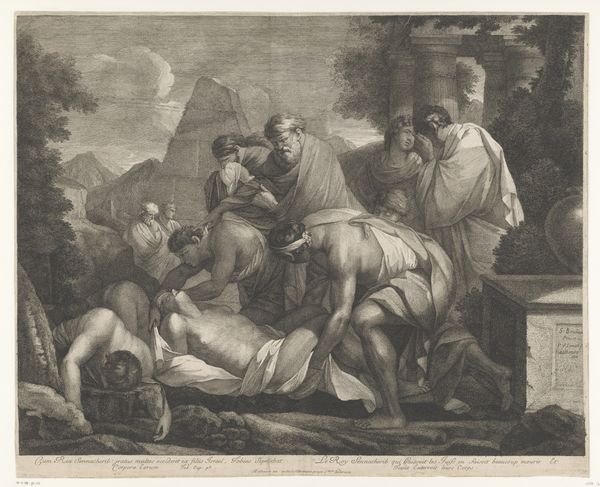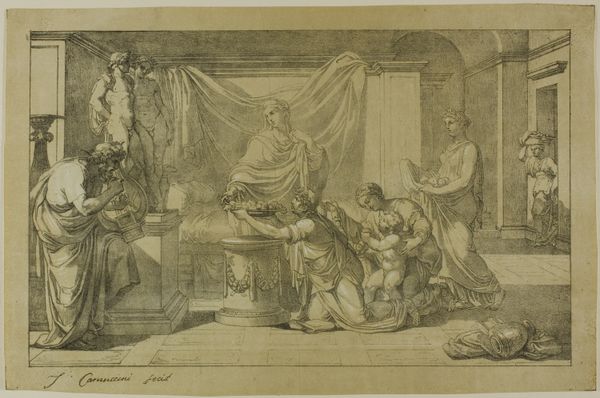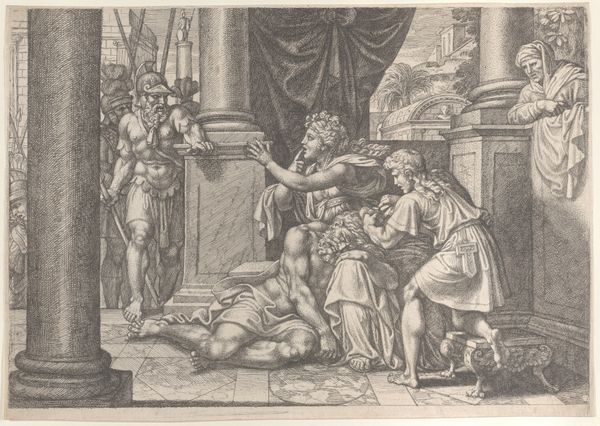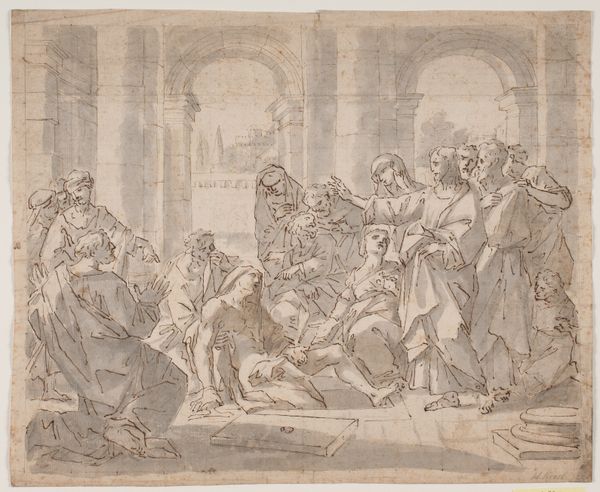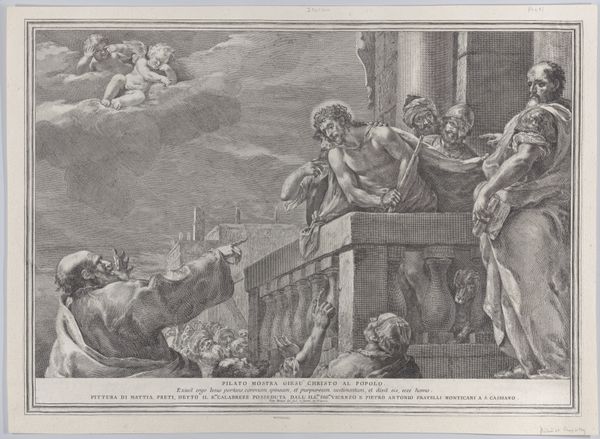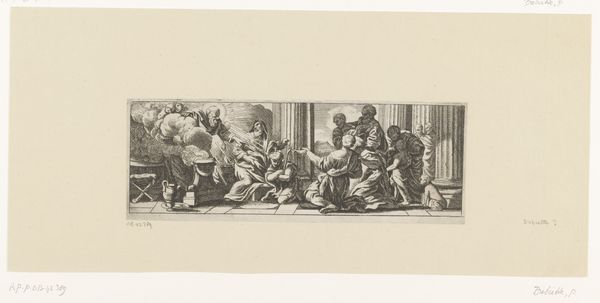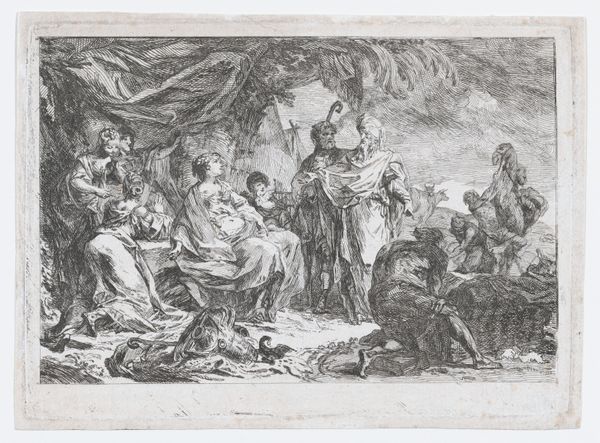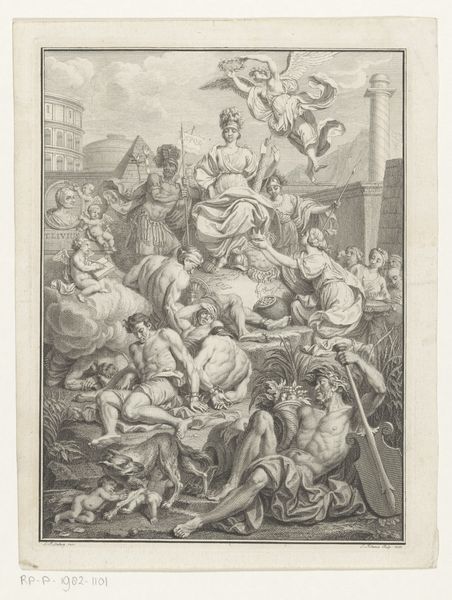
Le Jeune Astianax qu'Andromaque avoit cache dans le tombeau d'Hector est arrache des bras de sa Mere par les orders d'Ulisse 1766
0:00
0:00
drawing, print, engraving
#
drawing
#
neoclacissism
#
narrative-art
# print
#
pencil sketch
#
figuration
#
history-painting
#
academic-art
#
engraving
#
watercolor
Dimensions: 18 7/8 x 23 3/4 in. (47.94 x 60.33 cm) (sheet, trimmed within platemark)
Copyright: Public Domain
Curator: This print, dating back to 1766, is by François-Philippe Charpentier. Its title, "Le Jeune Astianax qu'Andromaque avoit caché dans le tombeau d'Hector est arraché des bras de sa Mere par les orders d'Ulisse," is quite a mouthful but translates to "The Young Astyanax, whom Andromache had hidden in Hector's tomb, is torn from his Mother's arms by the orders of Ulysses." Editor: Immediately, I’m struck by the stark emotionality. There's this palpable sense of injustice and maternal anguish rendered so delicately. The composition leads our eyes to Andromache losing her child, evoking feelings of protectiveness and fury. Curator: Indeed. Charpentier skillfully uses line and tone in this engraving to capture a pivotal moment from classical literature, likely drawn from Racine's tragedy *Andromaque*. We see Ulysses' men forcefully separating mother and child near what appears to be a tomb, underlining the ruthless nature of political expediency. It’s history painting rendered with incredible precision, adhering to Neoclassical ideals. Editor: It's also a potent visual statement on power dynamics and the dispossession of women and children during wartime. Consider the context: in the 18th century, images like this fueled debates on morality and empire, prompting reflection on France’s own colonial endeavors. The drawing resonates with ongoing issues of familial separation and state violence. Curator: Absolutely. And let’s not overlook the deliberate staging. The architectural elements – the columns, arches, and distant city – lend a sense of gravity and timelessness, elevating the scene from mere anecdote to a representation of universal suffering. Editor: Also, look at the subtle details – the collapsed architectural elements symbolize ruin and loss, serving as a critique of military actions. The visual hierarchy here demands scrutiny, positioning the oppressed Andromache and Astyanax against the militarized patriarchal force embodied by Ulysses and his army. Curator: A powerful interpretation. What strikes me is the piece’s accessibility. Charpentier manages to convey a profound narrative without relying on overly complex allegorical devices. Editor: For me, this isn’t just about classical myth; it is a historical reflection on how power impacts marginalized communities, sparking questions about culpability and systemic injustices that still affect societies today. Curator: An engraving indeed sparking dialogue even centuries later. Editor: Which goes to prove art's continued necessity.
Comments
No comments
Be the first to comment and join the conversation on the ultimate creative platform.

